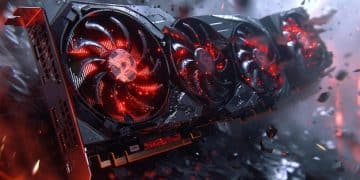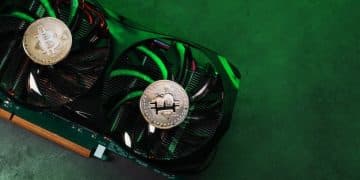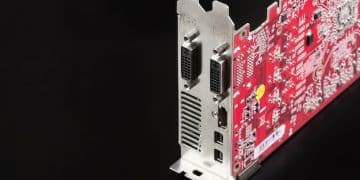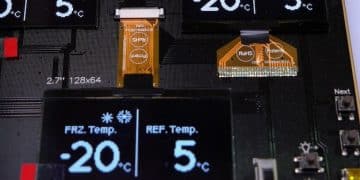AMD Radeon ProRender: Powering Content Creation with GPU Rendering
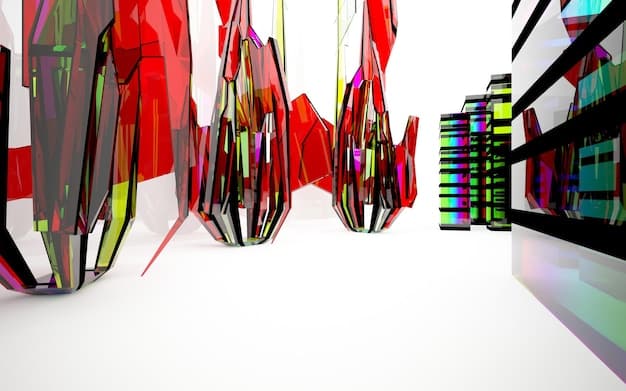
AMD Radeon ProRender is a high-performance, physically-based rendering engine that empowers content creators to leverage the power of their GPUs for faster and more realistic rendering workflows across various industries.
Unlock unparalleled rendering power with AMD Radeon ProRender: Unleashing the Power of GPU Rendering for Content Creators. This technology offers content creators a gateway to faster, more efficient, and visually stunning rendering workflows.
Understanding AMD Radeon ProRender
AMD Radeon ProRender is a physically-based rendering engine that utilizes open standards to deliver high-performance rendering on a variety of hardware. Designed to integrate seamlessly with popular content creation tools, it allows artists and designers to produce photorealistic images and animations with remarkable efficiency.
ProRender distinguishes itself by being hardware-agnostic, meaning it can harness the power of both CPUs and GPUs, including those from AMD and other manufacturers. This flexibility allows users to maximize their existing hardware investment while achieving impressive rendering results.
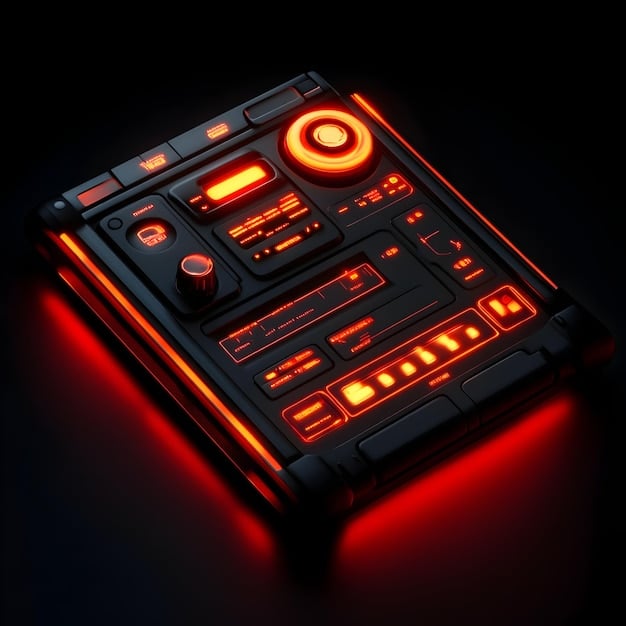
Key Features of Radeon ProRender
- Physically-Based Rendering (PBR): Simulates the interaction of light and materials in a realistic manner, resulting in more believable and visually accurate renderings.
- Hardware Agnostic: Supports rendering on both CPUs and GPUs from various manufacturers, providing flexibility and scalability.
- Open Standards: Based on open standards like OpenCL and Metal, ensuring compatibility and future-proofing.
- Integration with Popular DCC Tools: Seamlessly integrates with leading digital content creation (DCC) applications such as Blender, Maya, and Cinema 4D.
In essence, AMD Radeon ProRender empowers content creators with a versatile and powerful rendering solution that adapts to their specific hardware and software environment, enabling them to bring their creative visions to life with stunning realism.
Benefits for Content Creators
For content creators grappling with demanding rendering tasks, AMD Radeon ProRender offers a compelling set of advantages. By leveraging GPU acceleration, ProRender significantly reduces rendering times, enabling faster iteration and quicker project turnaround.
This efficiency translates to more time for creative exploration and refinement, allowing artists and designers to experiment with different ideas and push the boundaries of their work. AMD Radeon ProRender: Unleashing the Power of GPU Rendering for Content Creators brings unprecedented speed and efficiency.
Improved Workflow Efficiency
By accelerating the rendering process, ProRender empowers content creators to iterate more quickly and efficiently. This allows for faster feedback loops and quicker decision-making, ultimately leading to better results.
Realistic Rendering Results
ProRender’s physically-based rendering capabilities enable the creation of lifelike images and animations with accurate lighting, shadows, and reflections.
- Faster Iteration: Reduces rendering times, allowing for more experimentation and refinement.
- Enhanced Realism: Creates visually accurate and believable images with PBR.
- Greater Flexibility: Supports a wide range of hardware and software configurations.
- Cost-Effective Solution: Maximizes existing hardware investments.
Incorporating AMD Radeon ProRender into their workflow, content creators can unlock new levels of productivity and creativity, pushing the boundaries of what’s possible in visual storytelling.
Integrating ProRender into Your Workflow
Integrating AMD Radeon ProRender into a content creation pipeline is generally straightforward, thanks to its seamless integration with popular DCC applications. The specific steps may vary depending on the software used, but the general process remains consistent.
First, ensure that the appropriate ProRender plugin or add-on is installed and enabled within the chosen DCC application. This usually involves downloading the plugin from the AMD website or the software’s marketplace and following the installation instructions.
Step-by-Step Integration Guide
- Install the ProRender Plugin: Download and install the ProRender plugin for your DCC application.
- Enable the Plugin: Enable the ProRender plugin within the software’s settings or preferences.
- Select ProRender as the Renderer: Choose ProRender as the active renderer in the scene settings.
- Adjust Rendering Settings: Configure the rendering settings, such as sample count, lighting, and material properties.

Once ProRender is integrated, content creators can begin leveraging its power to accelerate their rendering workflows. By adjusting the rendering settings and experimenting with different parameters, they can fine-tune the results to achieve their desired look and feel.
By integrating **AMD Radeon ProRender: Unleashing the Power of GPU Rendering for Content Creators**, into existing workflows, teams can streamline processes and enhance the final product.
Optimizing Performance with ProRender
While AMD Radeon ProRender inherently offers performance advantages, there are several techniques that content creators can employ to further optimize rendering speed and efficiency. These strategies involve adjusting rendering settings, simplifying scene geometry, and leveraging hardware resources effectively.
One common technique is to reduce the sample count, which controls the number of rays traced per pixel. Lowering the sample count can significantly reduce rendering time at the cost of some image quality. However, with careful adjustment, it’s often possible to achieve acceptable results without compromising visual fidelity too much.
Tips for Optimizing ProRender Performance
- Reduce Sample Count: Lower the number of samples per pixel to decrease rendering time.
- Simplify Scene Geometry: Reduce the polygon count of models to improve performance.
- Optimize Lighting: Use efficient lighting techniques, such as baking lights, to reduce rendering overhead.
- Leverage GPU Acceleration: Ensure that ProRender is utilizing the full potential of the available GPUs.
By implementing these optimization techniques, content creators can maximize the performance of AMD Radeon ProRender and achieve even faster rendering times, ultimately boosting their productivity and creative output. Ensuring the proper optimization allows for **AMD Radeon ProRender: Unleashing the Power of GPU Rendering for Content Creators** to reach its potential.
ProRender vs. Other Rendering Engines
When evaluating rendering solutions, it’s essential to consider the strengths and weaknesses of different engines. AMD Radeon ProRender distinguishes itself from other renderers like Arnold, OctaneRender, and Redshift in several key aspects.
One notable difference is ProRender’s commitment to open standards, which ensures compatibility with a wide range of hardware and software configurations. This contrasts with some other renderers that are proprietary or optimized for specific hardware platforms.
Comparative Analysis of Rendering Engines
While other engines may excel in certain areas, ProRender’s strengths lie in its versatility, ease of use, and cost-effectiveness. Its ability to leverage both CPUs and GPUs, combined with its seamless integration with popular DCC tools, makes it an attractive option for content creators looking for a flexible and powerful rendering solution.
Choosing a rendering engine depends on the project, but **AMD Radeon ProRender: Unleashing the Power of GPU Rendering for Content Creators** provides a viable alternative.
The Future of GPU Rendering with AMD
As technology continues to evolve, GPU rendering is poised to play an increasingly critical role in content creation workflows. AMD is committed to pushing the boundaries of GPU rendering with ongoing development and innovation in Radeon ProRender.
Looking ahead, we can expect to see further advancements in ProRender’s performance, features, and integration capabilities. AMD is also actively exploring new rendering techniques, such as real-time ray tracing, to further enhance the realism and interactivity of rendered content.
- Real-Time Ray Tracing: Delivers photorealistic rendering at interactive frame rates.
- AI-Accelerated Rendering: Uses artificial intelligence to optimize rendering performance and quality.
- Cloud Rendering: Enables rendering tasks to be offloaded to cloud-based resources.
With AMD’s continued investment in GPU rendering technology, content creators can look forward to a future where rendering is faster, more efficient, and more accessible than ever before. The improvements over time will lead to **AMD Radeon ProRender: Unleashing the Power of GPU Rendering for Content Creators** becoming even more powerful.
| Key Point 🔑 | Brief Description |
|---|---|
| ⚡ Speed | Accelerates rendering times significantly. |
| ✨ Realism | Provides physically-based rendering for lifelike visuals. |
| ⚙️ Integration | Integrates with popular DCC applications. |
| 💻 Hardware | Supports AMD and non-AMD CPUs and GPUs. |
FAQ
▼
AMD Radeon ProRender is a physically-based rendering engine that uses open standards to deliver high-performance rendering on various hardware, including CPUs and GPUs from different manufacturers.
▼
ProRender integrates seamlessly with several leading digital content creation (DCC) applications, such as Blender, Autodesk Maya, Cinema 4D, and others, through dedicated plugins or add-ons.
▼
Yes, ProRender is hardware-agnostic and can leverage the processing power of both CPUs and GPUs, enhancing rendering speeds and offering flexibility in hardware usage.
▼
ProRender improves workflow efficiency by significantly reducing rendering times, allowing content creators to iterate more quickly and efficiently, leading to faster feedback loops and better results.
▼
Yes, AMD Radeon ProRender is generally available as a free plugin or add-on for supported DCC applications, making it an accessible rendering solution for content creators with budgetary constraints.
Conclusion
In conclusion, AMD Radeon ProRender stands out as a powerful and versatile rendering solution for content creators seeking to harness the full potential of their hardware. Its commitment to open standards, combined with its seamless integration with popular DCC applications, makes it an attractive option for both professionals and hobbyists alike. As GPU rendering continues to evolve, AMD is poised to remain at the forefront of innovation.

